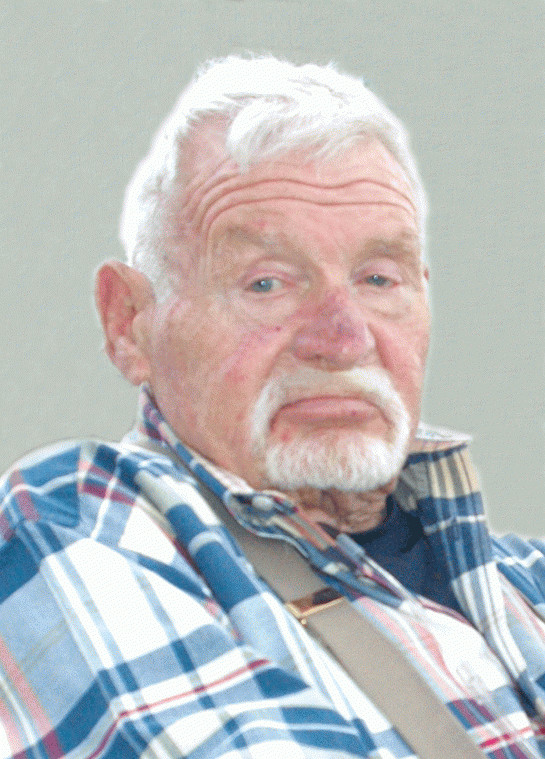John Stanley Llewellyn Jr.
John Stanley Llewellyn Jr., an engineer and flight control officer whose nearly quarter-century-long career at NASA spanned the formative years of American manned spaceflight, died on May 8 at his home in Gonzales. He was 81.
Llewellyn, a former Marine, was known as much for his colorful personality and brazen exploits as he was for his contributions to the Mercury, Gemini and Apollo spaceflight programs. Most famously, during the 1960s, Llewellyn, defiant after his parking pass was revoked for parking on the grass in front of the Houston Mission Control Center, began taking alternative modes of transportation to work – first hitchhiking, then borrowing his child’s Big Wheel tricycle, and, eventually, riding his horse: “I took the horse up there [to the office building] and unsaddled him and tied him to that thing by the generator,” Llewellyn recalled in a 2001 interview for a NASA oral history project.
His unabashed, larger-than-life character was matched by his tenacity, professionalism and commitment to “getting it right.” In 1970, Llewellyn, at that time a flight dynamics officer at NASA’s Mission Control Center in Houston, was listening to the public-access NASA radio feed while driving home from a night class when he heard Apollo 13 Commander Jim Lovell’s famous radio transmission: “Houston, we have a problem.” He drove straight to the Mission Control Center, where for the next five days he was on the front lines of the successful effort to bring the crippled spacecraft home.
John Llewellyn Jr. was born on March 30, 1931, in Newport News, Va., to John Stanley Llewellyn, a fisherman, and May Parker, a schoolteacher.
Shortly after high school, Llewellyn fought in the Korean War with the 1st Marine Division, earning two Purple Hearts and a Bronze Star with Valor for his service. After the war, while a student at the College of William and Mary in Williamsburg, Va., he was inspired by the 1957 launch of Sputnik to change his major to physics and join the nascent American space flight program, first as an intern during his summer breaks from school and later full-time for NASA’s forerunner organization, the National Advisory Committee for Aeronautics. A protégé of NASA pioneer Eugene “Gene” Kranz, Llewellyn was a member of the Space Task Group, a hand-selected team of engineers whose research formed the basis of the eventual manned spaceflight program. At a time when advances in spaceflight were realized largely as a result of painstaking trial and error, Llewellyn’s work in heat-transfer dynamics, telemetry and radio communication proved integral to NASA’s efforts to launch Americans into space and return them home safely.
In 1961, Llewellyn was the capsule communications officer for the Mercury Freedom 7 mission that made Alan Shepard the first American to travel to space, the first of several stints he did at remote tracking stations he helped establish in far-flung locales such as Zanzibar, Nigeria and the Canary Islands.
The following year, Llewellyn was assigned to NASA’s Mission Control Center in Houston where he worked for nearly 10 years on every manned space flight during that period as a “retro,” or retrofire, officer responsible for the complex set of de-orbital and re-entry maneuvers that brought astronauts safely back to Earth. While there, he coined the nickname “the trench” to refer to the front row of Mission Control, where he and his fellow flight dynamics officers worked chaotically among the pneumatic tube canisters used to carry papers with data and messages, which reminded Llewellyn of “a bunch of 105mm Howitzer canisters” from his combat days in Korea.
After leaving Mission Control, Llewellyn worked on a variety of projects for NASA until he retired in 1981. A cowboy at heart, in his later years Llewellyn managed a sprawling cattle ranch and sugar cane operation in Belize. He also owned a satellite communications company and did international consulting work in the same field.
Llewellyn is survived by his wife, Sandy; daughters Lane Llewellyn and husband Joseph Mustachio, Vivian Miller and husband Dan, Rebecca Frazier and husband Doug Frankhouser, and Lindner and husband Nelson Morales-Bello; son Rodney Frazier; and grandchildren Alex and Ben Frankhouser and Madison and Reed Lindner.
A lifelong adventurer, traveler and trailblazer, Llewellyn remembered growing up in York County, Va., just a dozen or so miles from Langley Research Center, where he would begin his career at NASA: “I spent a lot of time on the Chesapeake Bay and looking at stars at night. So I already was fascinated and I just understood.”
“I used to say we had lost the best job we’d ever had,” he said of the end of his career in a 2001 interview for NASA. “Who ever had a job better than that in the whole world? I went to work every day to go to the moon.”
A private celebration gathering of friends and relatives will be held Saturday, May 26, in Friendswood. His ashes will be laid to rest at Arlington National Cemetery.
Comments







